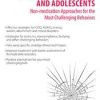Pediatric Neuroplasticity Interventions for Sensory and Primitive Reflex Integration – April Christopherson | Available Now !
$199.00 Original price was: $199.00.$56.00Current price is: $56.00.
Pediatric Neuroplasticity Interventions for Sensory and Primitive Reflex Integration – April Christopherson | Instant Download !
Sale page_https://catalog.pesi.com/item/36755/
Archive: https://archive.fo/nH046
Our brains can be rewired to enhance new learning. In some cases, the brain acts as an adaptive mechanism to compensate for lost function or maximize remaining function in the event of brain injury.
As therapists, when we treat the causes and symptoms of these motor delays, we can utilize alternate brain pathways to improve the effects of therapy. Neuroplasticity treatment advances motor and cognitive functions in the brain.
This course delivers new and exciting ideas on how to detour around damage and incorporate viable nervous system connections, from congenital abnormalities to traumatic brain injuries. You’ll learn how to use therapy approaches that can change the brain in the areas of reaction timing, motor control, language, and sensory development and how neuroplasticity can positively affect challenges some children have such as poor auditory processing, hinders in reflex integration, delayed developmental milestone achievement, poor language development, and more!
In this recording, you will gain creative and evidence-based approaches to incorporate into a multisensory experience and drive home the importance of diverse and novel activities during treatment sessions. Video case studies will demonstrate changes before and after integrative neuroplasticity treatments. The therapy techniques learned in this one-day course can be easily integrated into the clinic or home as early as the next day!
- Describe the primitive reflexes’ influence on movement patterns.
- Identify the multilayer approach using neuroanatomy and brain function.
- Evaluate strategies to incorporate techniques into home programs for parents and caregivers.
- Recognize the importance of positive treatment sessions and verbal cues.
- Analyze the relationship between brain dysfunction and tone abnormalities.
- Restate different approaches to changing low and high tone qualities.
NEUROANATOMY & BRAIN DEVELOPMENT
- Brain stem and functions
- Occipital lobe
- Temporal lobe
- Frontal lobe
- Parietal lobe
BEYOND THE LEVEL OF BRAIN DAMAGE
- Neurodevelopmental screens
- Examples of damage
- What is working and what is not
- Where to rewire
- Therapy in infants – faster change
- Going deep into the brain
DEVELOPMENTAL DELAYS – HOW TO APPROACH TREATMENT
- Developmental milestone review
- Sensory motor development
- Vision
- Vision and hearing
- Speech Sensation
- Primitive reflex patterns and influence
- Going back a step-in therapy treatments
NEW PERSPECTIVE ON THE NERVOUS SYSTEM FOR POSITIVE CHANGE
- Lobes next door
- Videos of before and after sensory
- stimulation combinations
- How vision can be stimulated
- Education for parents and caregivers
- Shaping neuropathways
RESULTS OF NEUROPLASTICITY TECHNIQUES
- Changing brain connectivity
- Primitive reflex integration and increased active movements
- The “team” – patient, therapist, and parent/caregiver
- Sensory stimulation to promote appropriate motor response
- Smooth movements
- Strength is not the same as tone
- Simple activities to present to parents
INTEGRATING NEUROPLASTICITY INTO THERAPY
- Sensation is 3-dimensional
- Vision exercises
- Sensory stimulation for high tone vs. low tone
Tag: Pediatric Neuroplasticity Interventions for Sensory and Primitive Reflex Integration – April Christopherson Review. Pediatric Neuroplasticity Interventions for Sensory and Primitive Reflex Integration – April Christopherson download. Pediatric Neuroplasticity Interventions for Sensory and Primitive Reflex Integration – April Christopherson discount.
1 review for Pediatric Neuroplasticity Interventions for Sensory and Primitive Reflex Integration – April Christopherson | Available Now !
| 5 star | 100 | 100% |
| 4 star | 0% | |
| 3 star | 0% | |
| 2 star | 0% | |
| 1 star | 0% |
Sorry, no reviews match your current selections
Q & A
Ask a question
Your question will be answered by a store representative or other customers.
Thank you for the question!
Your question has been received and will be answered soon. Please do not submit the same question again.
Error
An error occurred when saving your question. Please report it to the website administrator. Additional information:
Add an answer
Thank you for the answer!
Your answer has been received and will be published soon. Please do not submit the same answer again.
Error
An error occurred when saving your answer. Please report it to the website administrator. Additional information:
Related products
Ecommerce
NLP & Hypnosis
NLP & Hypnosis
NLP & Hypnosis












Thank you | Pediatric Neuroplasticity Interventions for Sensory and Primitive Reflex Integration – April Christopherson